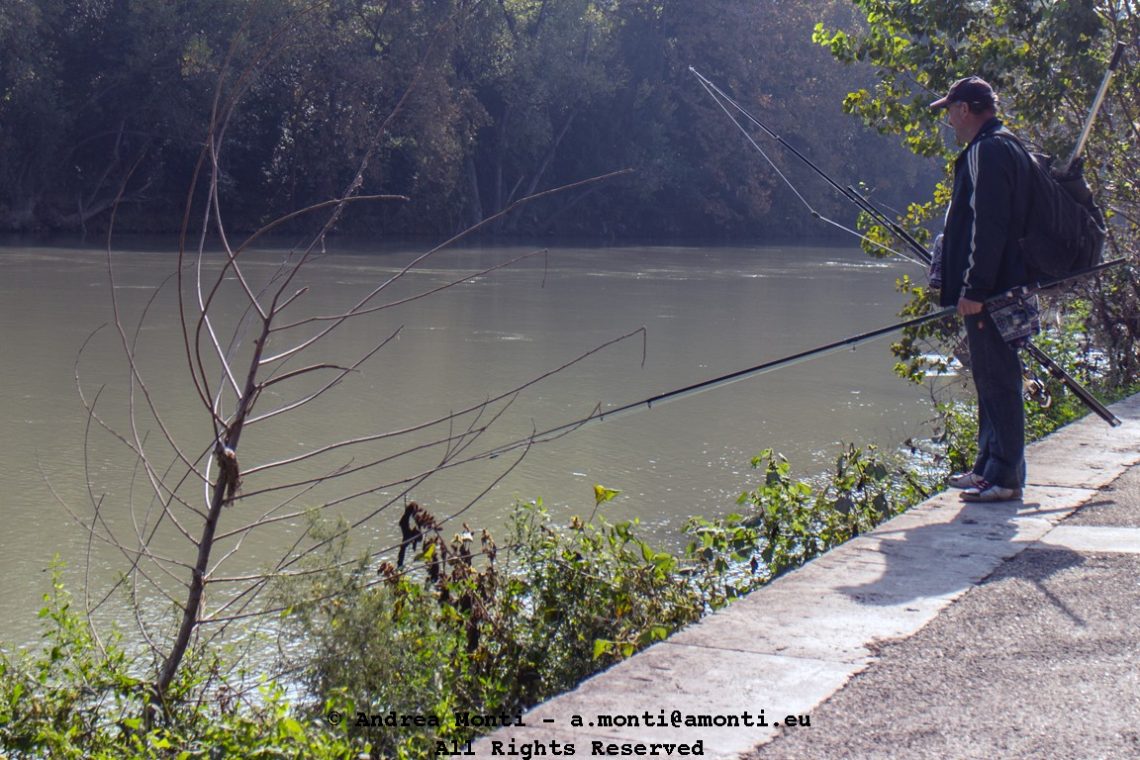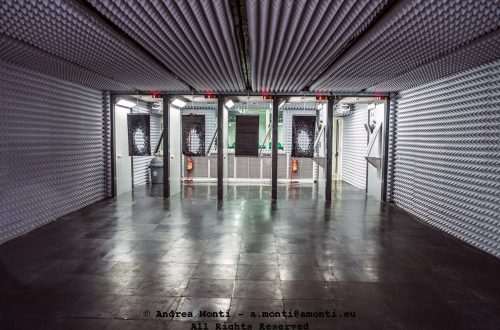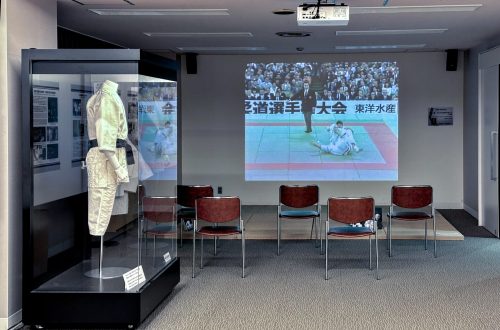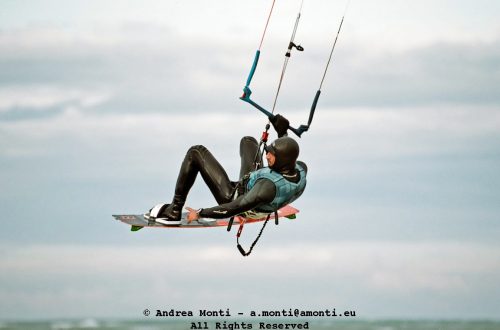
A Fisherman in Rome
There is a quiet irony in standing on the banks of the Tiber, camera in hand, and seeing this scene unfold — a solitary fisherman, rod extended, gazing into the slow, opaque water. Just a few metres above, Rome hums and roars: scooters weave through traffic, tourists cluster at monuments, and shopkeepers call out in markets. Down here, however, time seems to flow at the river’s pace — unhurried, stubbornly indifferent to the world above.
From a compositional standpoint, the photograph makes good use of negative space. The wide expanse of muted, silty water forms a calm, almost monotone backdrop that lets the figure of the fisherman stand out without distraction. His posture — leaning slightly forward, lines and rods fanning out — draws the eye naturally from right to left, leading us toward the spindly tree in the foreground. That bare, skeletal form adds a subtle counterbalance, a reminder of nature’s persistence even in the heart of a city.
The exposure handles a tricky contrast: bright light catching the fisherman’s cap and jacket, the shaded bank, and the reflective water’s surface. The dynamic range is well managed, keeping details in both the highlights and shadows. The slight haze in the background gives depth, hinting at the dense foliage across the river while maintaining the image’s tranquil atmosphere.
Technically, the photograph avoids unnecessary embellishment. It isn’t trying to romanticise or dramatise the moment — instead, it captures the simplicity of the act itself. This restraint works in its favour, because the real weight of the image lies in its context: the incongruity of such stillness, so close to one of the most chaotic and history-saturated cities in the world. It’s a reminder that Rome isn’t just its ruins, churches, or piazzas — it’s also these small, almost invisible slices of life that carry on quietly beneath the city’s grand stage.




